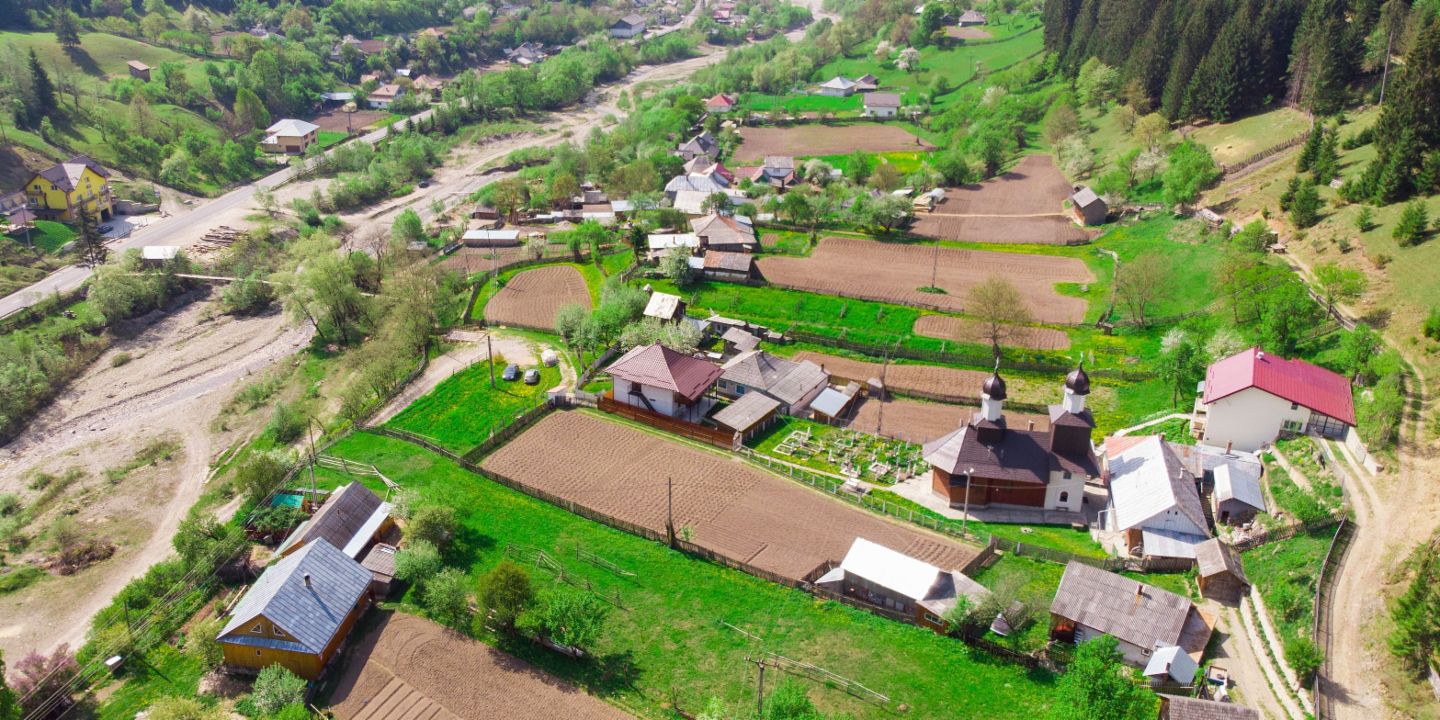Secured Debts: What can go wrong with property deals.
Houses with just three walls, resorts with no power or road connections: Anyone wanting to purchase debt secured by real estate should prepare themselves for any eventuality – and, above all, should thoroughly inspect every deal before going ahead. This is certainly never a boring task for Sebastian Pollmer and his team, who analyse everything to do with the EOS Group's secured debt portfolios.
One look at Google Street View is enough. Sebastian Pollmer takes a virtual walk along the walls of the building. He checks the length and breadth and gives the roof a once over. “I would estimate that to be 700 or 800 square metres,” he then says. Empirical value. This is a skill he has developed in his role. The “Secured Portfolio Valuation” department, headed by Pollmer, takes care of unpaid debts that are secured by real estate. In 2018, EOS set up a separate department for this operation in Hamburg, as the international market for secured debts is growing rapidly.
Property valuations were previously the responsibility of Risk Management. “However, since 2016, we have expanded significantly in Eastern Europe; primarily in Croatia, Bulgaria, Hungary, Serbia and Slovenia.” Banks there are selling more and more defaulting loans, also known as non-performing loans (NPLs). And more of these include secured debts; NPLs debt secured by real estate.

Too many bad loans.
One reason for this development is that many banks are granting extremely high-risk loans – and have been sitting on a pile of outstanding secured debts: “When you see a complex of 26 holiday apartments with no power connections or road links, you wonder how it all came about.” New regulations, such as the “International Financial Reporting Standard 9” (IFRS 9), are equally having a strong impact. Since their introduction, banks have had to provide more equity capital for NPLs. “There has therefore been greater pressure on banks to sell them.” The European Central Bank (ECB) also wants to see lower percentages of NPLs in balance sheets.
A business with a future. However, the market for secured loans is not without its risks. “It is often unclear what belongs to whom. There are countries emerging from a transformation phase.” Sometimes, the real socialist regimes leave a legacy of unusual rules regarding ownership. In Serbia, someone may often only purchase the building, but not the land on which it stands. “And in Croatia, we once had a debt secured on a hotel, but not on the hotel’s lift,” explained Pollmer.
Bizarre property rules.
It is not just statutory rules that pose a challenge for Pollmer and his current team of three. “The most important thing for our work is data,” he remarked. How big is the property the debt is secured on? What count as “traditional” features? What do comparable buildings cost? With on-site colleagues and local experts, the team calculates its offer. For packages with a value of 20,000 or several million euros. For individual apartments or entire blocks, or even a piece of land covering 60 hectares. “The most important thing about my work is to condense all these aspects into a figure,” said Pollmer.
Then you receive the data on the secured debt property. In some countries, land registry entries or notarial certification can sometimes be missing. “There are buildings that have not been recorded anywhere. Buildings that have been erected without planning permission and sold without permission. In Germany, there has been an EOS company for a number of years that assesses this so that comparative figures are available. However, in many other countries, we first have to establish our own database for this purpose.” This is what Pollmer's department does, in close cooperation with experts on site and with Eastern Europe Division Management.


No inspection, no deal.
Sometimes even basic data is missing. “In these cases, the bank does not even know the size of the apartments on which it has a claim,” said Pollmer. Which is why his colleagues are regularly on site. They are there to view the property the debt is secured against, and measure its size. “The aim is not to value the property as low as possible. Sometimes, here at the bank, we might say: the property has a greater value than you have estimated.” That's how foundations for long-term cooperation are made.
Self-image as part of the Otto Group also plays a part here: EOS stands by its offers and also treats the people who have fallen behind with their payments with respect. “When we conduct negotiations, we also often hear people saying: you haven’t offered us the highest price, but you are the company with the best reputation.”
Not every secured debt property warrants an on-site visit. Often, it is not even necessary. “A lot of technical opportunities have come along which investors can use to obtain more information,” said Pollmer. Drone photographs may be available or you can use Google Street View. “Over time, just one look is enough to know that a price cannot possibly be right.”
However, even these tools are not enough to entirely rule out all surprises. In Eastern Europe, EOS recently purchased a secured debt portfolio that included a two-storey house. There was no site visit. Only after the purchase did they discover that the house only had three walls. Pollmer smiled: “With all our experience, there is always something that we see for the first time.”
Copyright: Shutterstock
Explore more from EOS



